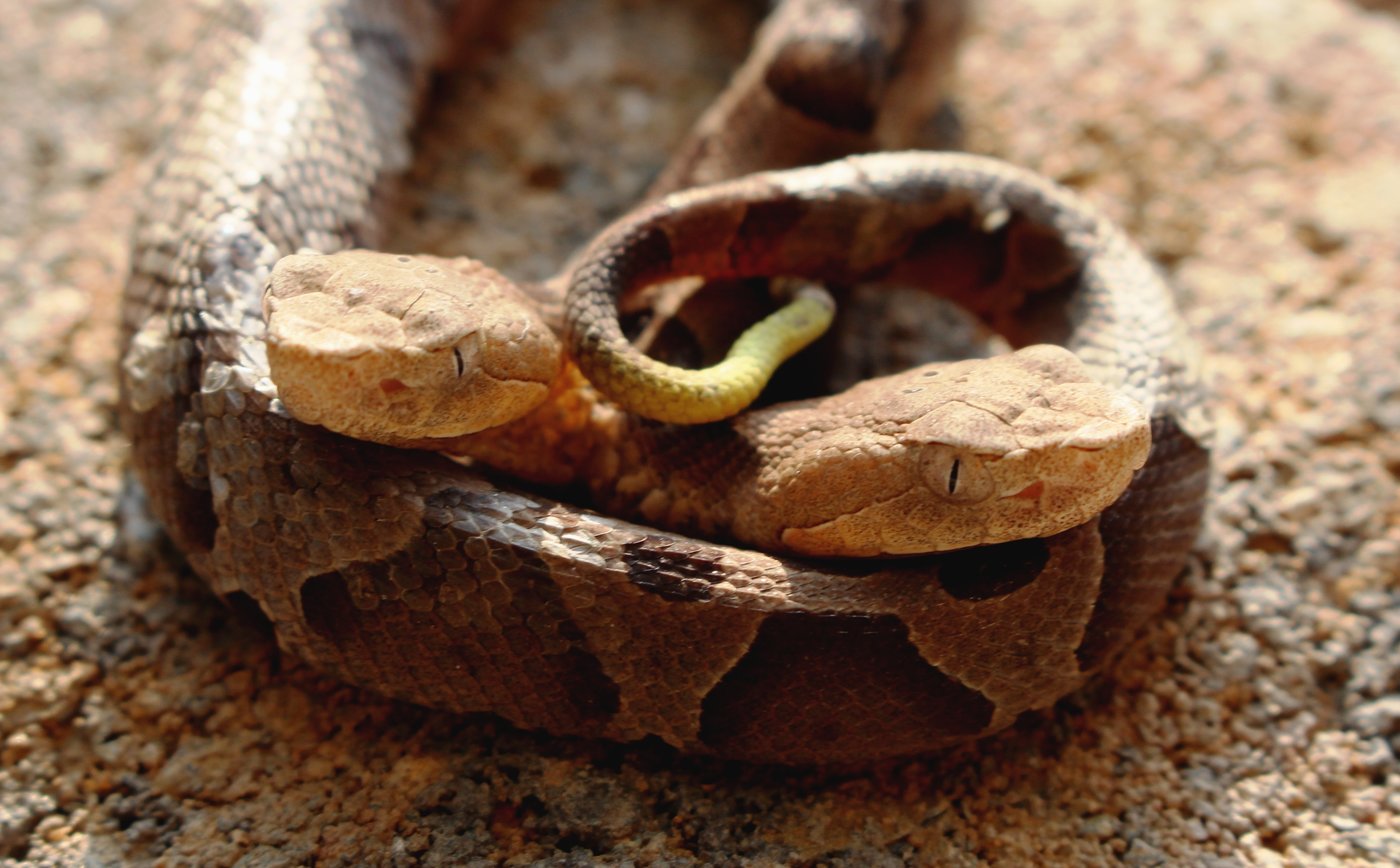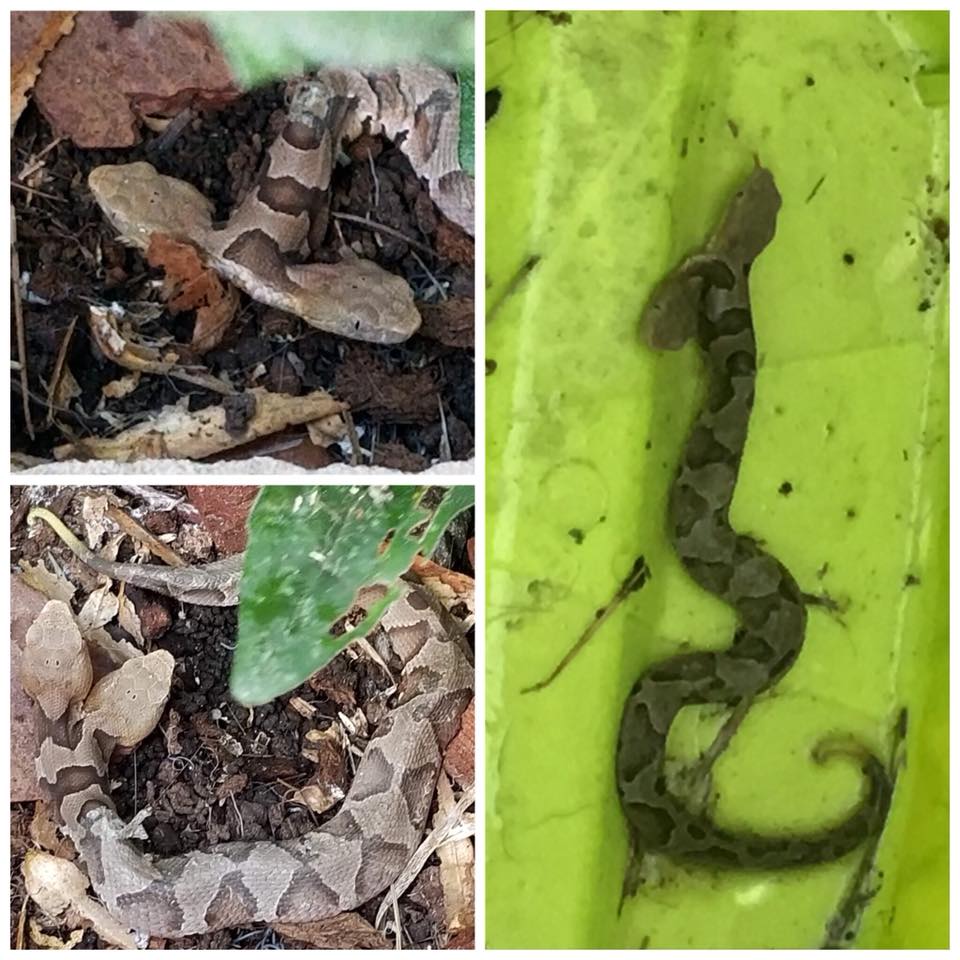
Found all the way from New England to West Texas and northern Mexico, copperhead snakes, which get their name from their reddish-brown heads, are the most commonly seen snakes in North America. Hence, a sighting of the venomous reptile is not earth-shattering news, unless, of course, you happen to find one with two heads! Believe it or not, that is what a Woodbridge, Virginia homeowner stumbled upon while tending to her flowerbed on September 20, 2018.
While most people would have run for cover, the brave woman, who wishes to remain anonymous, captured the mutant reptile, but not before her neighbor Stephanie Myers had a chance to admire it. Myers, who created a social media frenzy when she posted the snake’s images on her Facebook page, told USA Today, "I wanted to look away but couldn't stop looking at it. Plays trick[s] on the eyes."

When the owner sent photos of the snake to the local Herpetological Society for identification, they instantly notified the Virginia Wildlife Center about the rare discovery. On September 21, 2018, the two-headed reptile was picked up by the state herpetologist and taken to the center for examination. Radiographs of the six-inch-long baby copperhead, estimated to be three weeks old, revealed it has two tracheas, (the air passage from the throat to the lungs), two esophaguses (the part of the alimentary canal that connects the throat to the stomach), but just a single heart and one set of lungs. Dr. Ernesto, who examined the snake, says its right head, which has a better-developed throat, would make it easier for the animal to swallow its prey. However, that may not be possible because the left head, which is more active and responsive to stimulus, appears to be the dominant one.
According to state herpetologist J.D. Kleopfer, while wild two-headed snakes are rare to begin with, finding one alive is even more so. That’s because the two brains often compete with each other when making decisions, making it harder to catch prey or escape predators. As a result, the reptiles either starve or get eaten. Fortunately, since this baby viper is in captivity, it will not have to worry about either issue. Also, given that the rest of the snake’s anatomy is shared, Kleopfer believes "both heads are getting the nutrition they need." If the yet-to-be-named specimen survives, Dr. Ernesto plans to place it in an educational facility where it can be admired by all!

While copperhead snakes can survive almost anywhere, they prefer to live in habitats with thick vines, vegetation, and debris. Their reddish-brown coloration and distinct band-like patterns provide an effective camouflage amid the dead leaves where they lay in wait for unsuspecting prey, which include mice, lizards, and even small snakes. The pit vipers, which belong to the same group as rattlesnakes, are equipped with long fangs that act as an efficient delivery system for the venom, killing the prey almost instantly. Fortunately, while the poison can result in symptoms like intense pain, throbbing, and swelling in humans, it is very rarely lethal. Also, the snakes only use their bites as a last defense, so if you happen across one, admire it from afar or just sneak past quietly.
Resources: NPR.org, .wildlifecenter.org, interestingengineering.com
